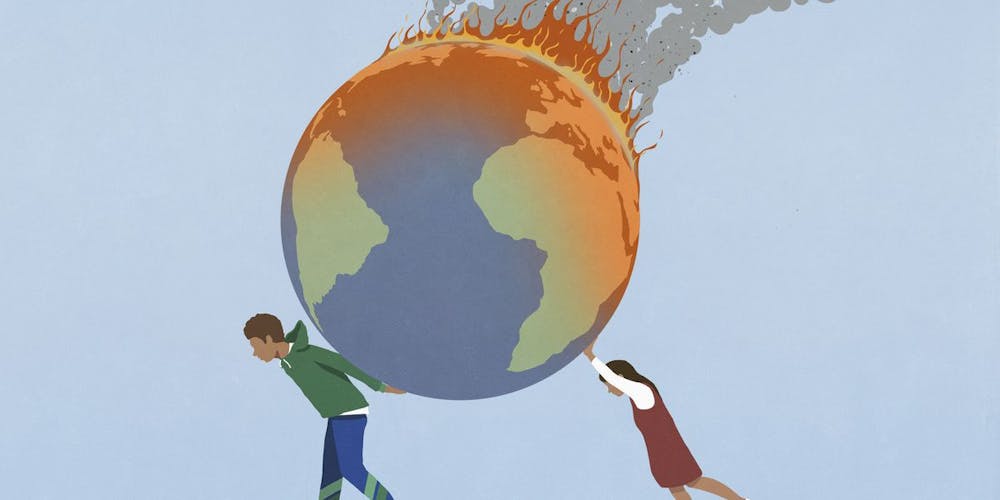In May, the World Meteorological Organization issued a warning, projecting that the Earth is poised to experience its hottest year on record at least once in the coming five years.
This year has witnessed a series of climate extremes, coinciding with the return of El Niño, a natural climate pattern characterized by periodic warming of the Pacific Ocean, that occurs every few years.
John Zimmerman, a student at IUPUI, expressed concern over the societal impacts of 2023 being the warmest year. He noted the routine response of governments signing agreements on emissions reduction, which often fall short, leading to disillusionment among the youth.
“Independent political direction in climate demonstrations is crucial for real change. Criticizing inadequate policies of political parties, I could see a rise in heat-related deaths, particularly among the homeless,” Zimmerman said.
Climate change can be seen everywhere across the world today. Droughts and crop failures are causing food and water shortages in some areas. Wildfires like in Canada in the Northwest Territory have become more common.
Dr. Ash Enrici, an assistant professor at the IU Lilly Family School of Philanthropy, emphasized that record-breaking temperatures in 2023 are having significant societal and health impacts around the world.
“Prolonged heat waves are causing health problems and even deaths, especially among vulnerable populations like the elderly, young children, outdoor workers, and those without access to air conditioning,” Dr. Enrici said.
Scientists agree that by far the biggest cause of climate change is the burning of coal, oil and natural gas, which has triggered a long upward trend in temperatures.
An El Niño event, a temporary warming of specific Pacific regions that influences global weather patterns, contributes a modest additional impact. However, certain researchers contend that the presence of another factor is necessary for a more comprehensive understanding of the issue.
With extreme weather patterns becoming increasingly common the question remains, what are universities and governments going to do about it?
Dr. Enrici explained that Indiana’s government and IUPUI have taken some steps to reduce greenhouse gas emissions and adapt to climate change impacts, but the scale of action is inadequate given the pace of climate change. Strategies like transitioning Indiana's economy away from coal, incentivizing renewable energy, enhancing the resilience of infrastructure and agriculture, protecting vulnerable habitats and species, and engaging individuals and communities in climate action could help Indiana contribute more to addressing this global crisis.
The Indiana Department of Environmental Management plans to use a $3 million budget to conduct a comprehensive greenhouse gas emissions inventory. This effort is part of their commitment to environmental responsibility. The ultimate goal is to develop a Priority Climate Action Plan, a mandatory requirement set by the Environmental Protection Agency, with the completion deadline set for March 2024. IDEM's proactive approach aims to meet regulatory obligations and contribute to a more sustainable and environmentally conscious future.
Dr. Enrici holds out hope but realizes the challenges of moving away from gas and other products that harm the environment.
“Overall though, this challenge requires ambitious, coordinated efforts across all levels of government and society,” Dr. Enrici said.





